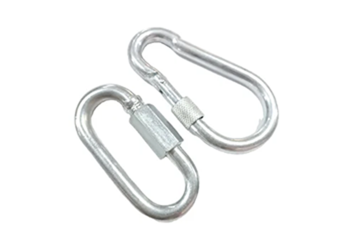Lis . 06, 2024 16:09 Back to list
rope rigging hardware
Understanding Rope Rigging Hardware Essential Components for Safety and Efficiency
Rope rigging is a crucial aspect of various industries, including construction, shipping, and event management. It involves the use of ropes, pulleys, and other hardware to lift and move heavy loads safely. Whether you're moving large objects or securing them in place, the right rope rigging hardware is essential for ensuring efficiency and safety. In this article, we will explore the key components of rope rigging hardware and their importance.
Key Components of Rope Rigging Hardware
1. Ropes The cornerstone of any rigging system, ropes come in various types—natural fiber, synthetic, and wire ropes. Each type has its specific applications and strengths. For instance, synthetic ropes are often favored for their lightweight nature and resistance to weather, while wire ropes are ideal for heavy-duty applications due to their strength and durability.
2. Pulleys These essential devices change the direction of force and can make lifting heavier loads more manageable. Pulleys reduce the friction involved in the rigging process, allowing for smoother operation. They are available in various designs, such as fixed, movable, and compound, each serving different purposes depending on the task.
3. Snatch Blocks A snatch block is a type of pulley that features an opening or hinge, allowing a rope to be quickly inserted or removed. This design is especially useful for rigging jobs that require frequent adjustments. Snatch blocks can significantly enhance the efficiency of a rigging system by allowing for more versatile rope configurations.
4. Hooks and Shackles These components play a critical role in connecting various elements of a rigging system. Hooks are used to attach ropes to loads, while shackles connect multiple rigging components, providing a secure and reliable link. It is essential to match the hook or shackle's working load limit to the application to ensure safety during operations.
rope rigging hardware

5. Tensioners and Clevises Tensioners are devices used to maintain or adjust the tension in a rigging system, preventing slack that could lead to hazards. Clevises are U-shaped devices with a pin that creates a pivot point, making them ideal for attaching and connecting rigging hardware. Both components contribute to the overall stability and effectiveness of the rigging setup.
Importance of Quality and Safety
When it comes to rope rigging hardware, quality cannot be compromised. Using substandard components can lead to equipment failure, resulting in accidents and injuries. Therefore, it's crucial to select rigging hardware from reputable manufacturers and ensure that it meets relevant safety standards.
Regular inspections and maintenance of rigging equipment are vital. Look for signs of wear and tear, such as fraying ropes, corroded hooks, or cracked pulleys, and replace damaged components immediately. Proper training for personnel involved in rigging operations also plays a critical role in maintaining safety and efficiency.
Conclusion
In conclusion, understanding the various components of rope rigging hardware and their applications is essential for anyone involved in lifting and moving heavy loads. By prioritizing quality, safety, and proper maintenance, businesses can ensure that their rigging operations are both efficient and safe, ultimately contributing to a more productive work environment. Whether you are a seasoned professional or a newcomer to rigging, familiarizing yourself with these essential tools is the first step toward success.


